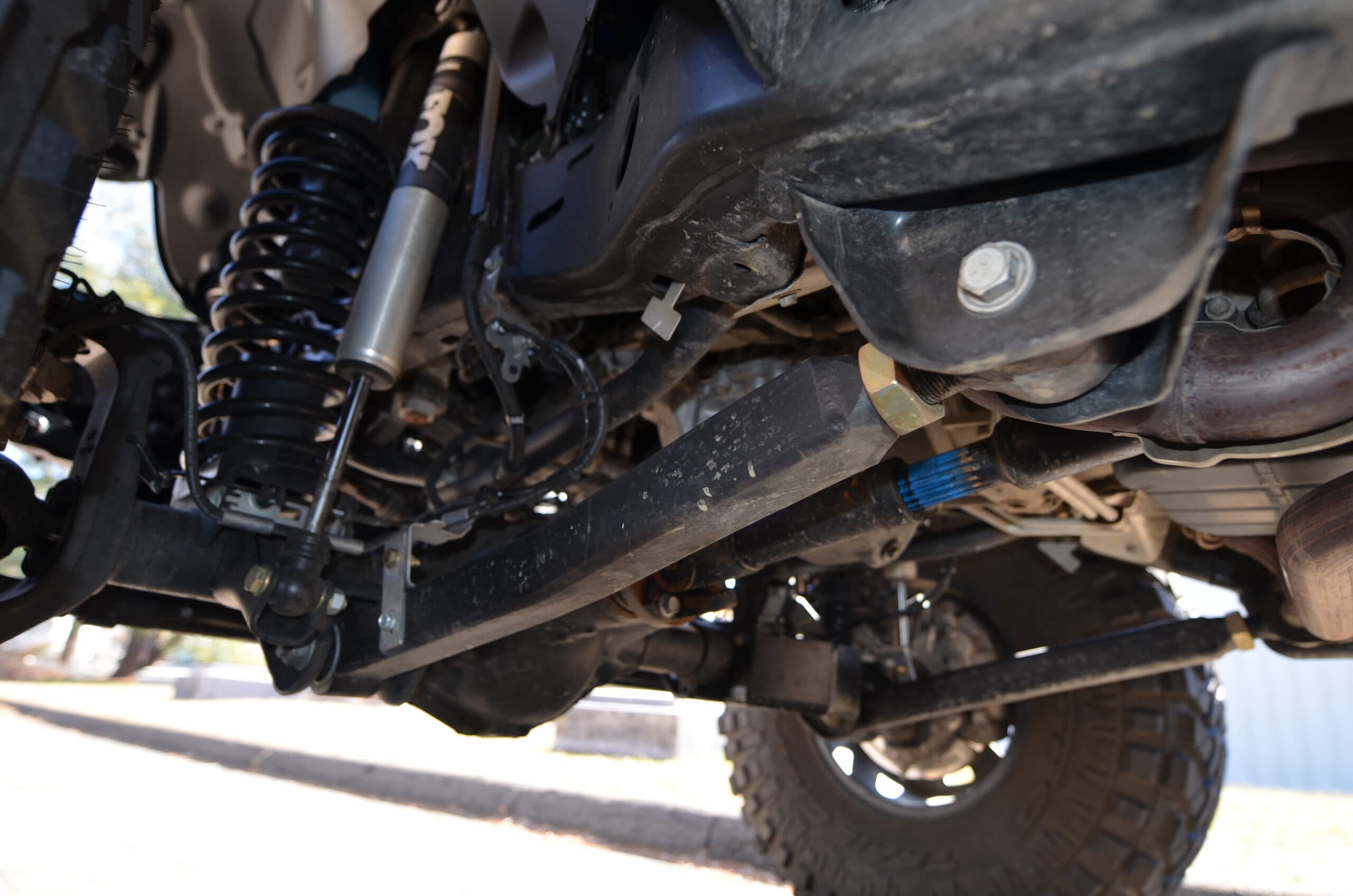
Adjustable or Fixed Control Arms – Why It’s Worth Upgrading Your Jeep
The perfect off-road vehicle probably doesn’t exist, but making off-roaders as close to perfect as possible is a big part of this sport. Every driver has their own idea of what “perfect” means, but there are a few things most people agree on. One of the most important is the suspension. It plays a huge role in how well a 4×4 vehicle performs off-road. But do you know how much each part of the suspension contributes to making the whole system work perfectly?
How Do They Work in a Jeep Wrangler?
Let’s take a look at control arms. They’re just a piece of metal, not very attractive, shaped a bit like an arm or a collarbone, depending on the type. This comparison isn’t random. Control arms in a car perform a job similar to the joints in our body. Now, imagine if we could adjust different parts of our skeletal system. Can’t picture that? Learn more about adjustable control arms, and you’ll quickly understand how your own Jeep could have an edge over you!
With the earlier comparison to joints in our body, we’ve already explained a bit about how control arms work. However, to be more precise – while they may look simple at first glance, they are essential components of the suspension system. Structurally, they connect the frame to the axle. Functionally, they form a flexible link between the vehicle’s wheels and its body. In the case of the Jeep Wrangler, this is achieved using various types of bushings. This allows the rigid control arms to move in a swinging, pendulum-like motion.
The design of control arms has a significant impact on the vehicle’s handling, specifically in:
- Affecting steering and traction,
- Supporting vertical axle movement, known as wheel articulation, while maintaining proper suspension geometry,
- Preventing axle rotation during acceleration and braking,
- Maintaining a straight driving path and preventing rear axle sway.
Control Arms in a Lifted Jeep
In Jeeps, where both the front and rear axles are solid, even a modest lift (as little as 2.5 inches) can cause the front and rear wheels to shift toward each other. This is due to the factory control arms becoming too short, pulling the axle toward themselves. Sometimes, installing a control arm relocation bracket can help, but you’ll get better results by replacing the control arm with a new one – preferably with a reinforced construction and more efficient bushings.
What’s more, a control arm that’s not properly adjusted for a lifted vehicle will interfere with the drivetrain angles. The driveshaft forms a pinion angle between the axle flange and the pinion yoke on the transfer case side, which plays a particularly important role. If this angle is too steep, it can cause significant drivetrain vibrations and lead to oil loss in the differential housing. It may eventually cause damage to driveshafts, transfer case bearings, and other components – in short, it could destroy the drivetrain.
In off-road driving, your suspension is constantly pushed to its limits, working hard to overcome all the terrain’s ups and downs. Extreme axle articulation can be a serious challenge for stock parts, and in some cases, it can be outright destructive.
Furthermore, driving under heavy loads is another challenge for stock control arms, which may lead to unwanted axle movement. If you’re using non-adjustable (fixed) control arms, there’s no way to correct poor suspension geometry or distribute the forces affecting the suspension. This leaves the drivetrain vulnerable to damage.

The Advantages of Adjustable Control Arms in Off-Roading
A great solution to these issues is upgrading your Jeep’s standard non-adjustable control arms to adjustable upper one. This allows you to re-center the axle within the wheel well and optimize suspension geometry. How? By reducing the pinion angle in relation to the vehicle’s increased ground clearance. In doing so, you mitigate the risk of damage to the drivetrain and improve the handling of your modified vehicle.
We recommend installing a full set of aftermarket adjustable control arms. These are designed for demanding off-road use, made from reinforced, thick, hard, and rigid materials that also help extend the lifespan of the drivetrain, including the differential.
Types of Adjustable Control Arms – Additional Benefits
Control arms in a Jeep are attached to the frame using bushings, which generally come in two types: silentblock (metal-rubber or polyurethane) bushings and uniball joints (ball joints).
Uniballs, thanks to their wide range of motion and ability to eliminate misalignment, work particularly well with long-arm control arms. Long-arms are designed for high lifts and extreme axle articulation. Such joints use a multi-piece, rebuildable design, which extends their lifespan and ensures continuous high performance throughout the vehicle’s lifetime. A great example of this is the Johnny Joint, used in the Premium series by Clayton.
For lower and medium lifts – typically chosen by people who both take their Jeep off-road and enjoy long-distance drives – Clayton’s Overland+ series with Giiro bushings are an excellent option. The multi-layer construction of this silentblock bridges the gap between rubber elements and flexible joints. Combined with a reinforced outer steel shell, it forms a cohesive unit that moves smoothly and effectively dampens drivetrain vibrations.
Moreover, investing in high-quality adjustable control arms that maintain their shape under any condition has another invaluable benefit. When the bushing wears out, you can simply replace that component, and your control arms will be as good as new, lasting until you decide to sell the vehicle. Most importantly, you’ll have a set that can be adjusted to any modifications you make to your Jeep.









Comments ()